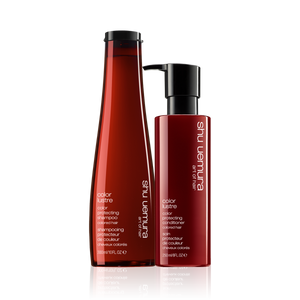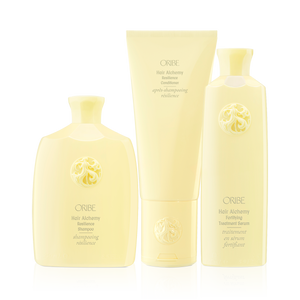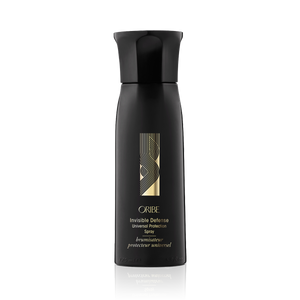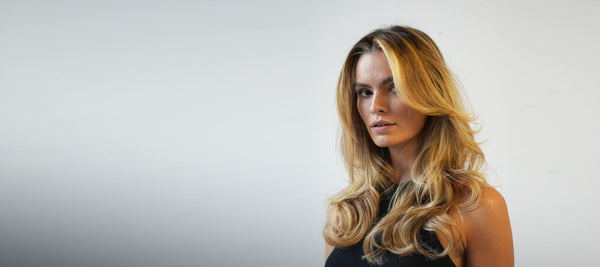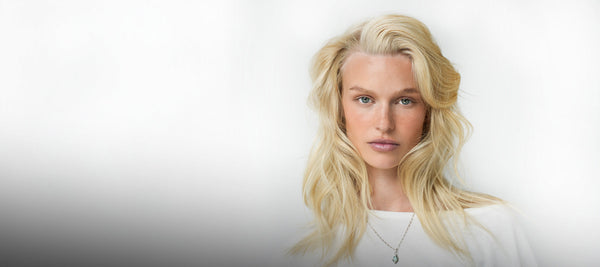Reverse balayage or lowlights: Which is best for enhancing blonde hair?
These clever techniques will make golden tones pop.
It may seem counterintuitive, but adding hints of darker colour to lightened hair can actually make your blonde appear more luminous. That’s what happens with lowlights and reverse balayage, where darker sections are woven in to create depth and a gorgeous multitonal finish.
“Sometimes people get really nervous about a lowlight because they think it's going to make their hair really dark or dull,” says senior colourist Steven Kamara. “But if it's done correctly, the contrast in tones makes the blonde appear brighter.”
These multidimensional methods are particularly useful if a client has been having blonde balayage or highlights for a long time, he says. “The hair can end up feeling flat even though it’s really light, so adding those panels of darkness back in will create more dimension.”
Colour technician Sonia Surani describes lowlights as a “classic technique” that colourists often use for a seasonal shift. “We tend to get quite a lot of clients requiring lowlights after summer when their hair's gone really bright in the sun and they want to transition into a winter blonde.”
Plus, they’re ideal for achieving this season’s palette of trendy warm blonde tones. Here, Steven and Sonia explain what lowlights and reverse balayage are, why they’re brilliant for blondes, and why Paul Edmonds London luxury hair salon is the go-to destination for multitonal colour…
WHAT’S THE DIFFERENCE BETWEEN LOWLIGHTS AND REVERSE BALAYAGE?
Lowlights and reverse balayage both involve placing darker panels of colour in lightened hair, but the key difference is that with lowlights, the coloured sections are wrapped in foil to develop, whereas reverse balayage is a freehand technique where the panels are painted on and left to dry as they develop.
“Lowlights are basically the same as highlights in the sense that we use foil,” says Sonia. “It's still a really fine weave, but instead of every foil being a highlight packet, around every two foils we add a lowlight packet, usually with semi-permanent colour.”
Both methods are typically done at the same time as lightening the hair, but the placement of reverse balayage is lower down and more subtle. “You leave a lot more of the natural hair untouched, and you leave the root out, like you do with the regular balayage, whereas with lowlights you take them right up to the root. The majority of the hair is blonde with a little speckle of the natural colour going through with the lowlight.”
A multi-tonal look can still be achieved with lowlights, Sonia adds. “Say I’m doing a full head of highlights with bleach. I might mix up two different shades of the lowlight, so I’ve got a darker blonde, a brunette tone and the bleached highlights.”
WHICH TECHNIQUE IS BEST FOR YOU?

Wondering whether lowlights or reverse balayage is best for achieving your desired look? Lowlights are usually done alongside highlights when the client wants to go a bit darker because their hair has gradually gone lighter.
“With each highlighting session, you generally get blonder and blonder because more hair is picked up in the foil,” Sonia explains. “If they feel like they’re too blonde, it’s too much of a block colour, I’ll say ‘Let’s keep the highlights but break them up slightly.’”
On the other hand, a client might want to keep their blonde look, but their hair is too damaged to be lightened again. “I might advise doing a lowlight because we can't physically put any more bleach on there, but we can add dimension so they still see a difference in the colour.”
For more precise placement and to enhance layered haircuts, Steven recommends reverse balayage. “Placement is key, because you're not going to want a lowlight directly on the front of the hairline, for instance. With reverse balayage, the colour can be really nice and soft through the top, and then the ends are that bit lighter.”
For shorter styles, it’s more difficult to use the freehand method, Sonia says. “When we're looking at pixie haircuts or quite short hair, it would be easier to do it using foils, so then we’d be doing lowlights.”
Lowlights are also excellent for grey blending for men and women when their hair has gone completely grey or white, Steven says. “When it’s all one colour, we can create a salt and pepper kind of result by adding lowlights. It gives more dimension and youthfulness because it takes people back to how they looked before they went fully grey.”
WHY CHOOSE PAUL EDMONDS LONDON?
At Paul Edmonds London, we emphasise a customised approach to colour, which is why all our colourists are trained in techniques such as lowlights and reverse balayage, using them to create beautiful, multidimensional blondes.
Expertise is particularly important for these multi-tonal methods, Steven says. “If a lowlight is done wrong, it can make your colour look muddy or very ashy, or if it’s too fine, it will get lost in the hair and actually make the hair look grey.”
Choosing the right tones and level of warmth is key, as is assessing the client’s hair condition, says Sonia, which happens during the colour consultation. “We'll take into consideration their hair colour, their skin tone, how long they've been going blond for, and what kind of look they want.”
Our colourists will never compromise on hair health or create a look that won’t last, so they may recommend a treatment programme if the hair is too damaged, Steven explains. “If you do a lowlight on somebody who's got very porous hair, it's just not going to hold. Within two or three weeks, it will have washed out or faded, then you're left with colour that has all merged back into one and dulled the blonde down.”
HOW TO MAINTAIN LOWLIGHTS OR REVERSE BALAYAGE
Whether lowlights or reverse balayage, darker panels will gradually fade, especially if they’re created with semi-permanent colour, which is why looking after your locks is crucial.
“If you're someone who washes their hair every day or goes swimming a lot, lowlights might not be for you,” Steven says. “The speed of fading also depends on the condition of the hair. If the hair is damaged, the colour is going to fade really quickly.”
For preserving your lowlights or reverse balayage, Sonia recommends Shu Uemura Color Lustre range or Oribe Hair Alchemy. For protection when using heated styling tools, she says, “Oribe Invisible Defence Universal Spray is a great all-rounder.”
Low-key glow
Lowlights and reverse balayage are two of the best techniques for adding natural hair depth and dimension for blondes.
Only experienced colourists can create these multi-tonal looks, which is why Paul Edmonds London is the perfect choice for luxury hair colour in London.
Ready to embrace your winter blonde look? Book a consultation at Paul Edmonds London.

